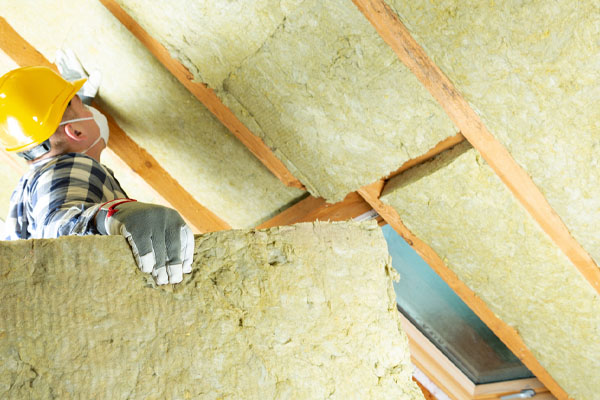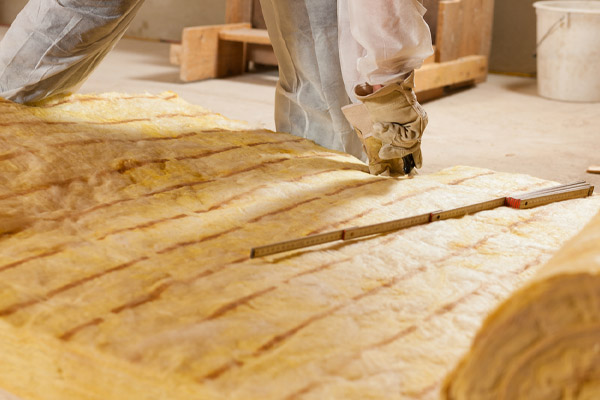How To Tell A Difference Between Cellulose And Asbestos Insulation

If you are buying a home you are probably looking at the home’s insulation to determine if you need to do any changes or not. New homes have cellulose, spray foam, or fiberglass as insulation. However, if you are looking at an older home, there’s a chance that your home may have been fitted with asbestos insulation. The problem is that it can be hard to make sure, given that asbestos and cellulose insulation can look alike.
Why all the fuss about knowing what insulation is installed in your home, you ask? This is because asbestos for insulation has been outlawed in many countries, including in the USA due to health and safety concerns.
Studies show that exposure to asbestos particles can lead to serious health consequences like asbestosis and lung cancer. As a result, asbestos use was banned in the US in 1989 although uses for the material prior to the ban were allowed. This means that homes fitted with asbestos insulation are probably still standing today, although their numbers are quickly dwindling. This article discusses cellulose vs asbestos insulation and how you can tell a difference.
Cellulose Vs Asbestos Insulation: How Are They Different?
Contents
Keep reading to find out more about these two insulation types.
Asbestos Insulation: What Does It Look Like?
Asbestos comes in four different forms: loose-fill, block, spray on and wrap forms. As loose-fill insulation, asbestos can resemble broken-down styrofoam that comes in white or lighter shades of eggshell gray. Loose-fill insulation is considered to be the most harmful form since the particles are already broken down and small enough to become airborne.
Asbestos can also be used as a wrap for pipes and ductwork. New asbestos wrap may look like thick and flexible pieces of cardboard. However, over time these wraps can break down into small particles that can also become airborne. Asbestos blocks resemble styrofoam blocks. They also deteriorate over time and will start chipping off into smaller particles that can be very dangerous when inhaled.
Spray-on asbestos insulation looks like the contents of a fire extinguisher: gray or white foam. This is often sprayed over ceilings and pipes for insulation. However, it can deteriorate into a fine dust that can become airborne when disturbed.
Cellulose Insulation: What Does It Look Like?
Cellulose resembles paper pulp. This is because cellulose insulation is made using recycled newspapers and textiles like denim. Paper and fabrics are chemically treated with boric acid or ammonium sulfate to infuse fire and pest retardant properties into the material.
To the naked eye, loose-fill cellulose insulation has the look and texture of dry paper mache or shredded paper. It can also be packed tightly into thick boards called dense-pack cellulose which is commonly used as retrofit insulation. These boards can serve as insulation and can also deaden sound.
Difference Between Asbestos & Cellulose Insulating Materials
Asbestos is a naturally-occurring mineral while cellulose is an aggregate of plant fibers and textile fibers. Asbestos insulation may also come with vermiculite particles which is another naturally-occurring material. Vermiculite insulation can contain asbestos which means you may also need to have this removed by a professional insulation or abatement company if you see vermiculite insulation in your home.
Cellulose insulation does not come with any harmful properties and is even considered a green insulation option because it is made up of recycled paper and textiles. Asbestos and cellulose actually look very similar to the naked and untrained eye. You may see traces of colored fibers or paper in loose-fill cellulose insulation. However, a sure determination if you have asbestos or cellulose can only be done using lab tests.
Similarities Between Asbestos & Cellulose Insulation
Asbestos and cellulose insulation can look like the same thing to the naked and untrained eye. They both come in solid and spray-on foams which are then encased in another material which makes it harder to determine whether you are looking at one or the other. Even when they break down, it can be hard to tell asbestos particles from cellulose particles.
Why You Need To Work With A Professional Insulation Company

As a homeowner, you shouldn’t waste time trying to determine whether you have asbestos or cellulose insulation in your home or not. This is particularly true especially if the insulation is clearly broken down and exposed. If this happens, seal off the area and immediately call a professional insulation or abatement company.
According to the Asbestos Institute, you need to work with professionals if you are looking at over ten square feet of asbestos in your home. However, even if you only suspect the presence of
asbestos, it is always prudent to get the professionals involved.
Professional abatement crews have the right training and equipment needed to make a definitive determination of the composition of the substance. Professionals also have training in asbestos removal to ensure that your home and environment are safe from exposure during the removal process. Professional crews are trained in the safe removal and disposal of all forms of asbestos, which means you don’t have to worry about these processes when you have a professional removal company working with you.
Conclusion
Talk to your reputable insulation installation company to ensure that you are making the right decisions when you need to remove asbestos from your home. They are also the people who can help you decide which insulation materials are suitable for your home to ensure that your home stays safe and energy-efficient all year round.
Cellulose Vs Asbestos Insulation Fort Collins CO
As you can see, when dealing with insulation in your home, consulting with a professional is the best option. There are a lot of factors to consider such as different, and possibly unsafe, insulation types. Ascend Construction specializes in insulation removal and installation, energy conservation, energy audits, whole house fan installations, and more in Fort Collins, Colorado, and the neighboring areas.

Contact Ascend Construction for a free consultation today. We can provide you with practical solutions to address the problem areas in your Fort Collins home. All of our services are affordable and our work is guaranteed. Click here to contact us or click the button below to give Ascend Construction a call. We offer free, no-obligation, in-home consultations.